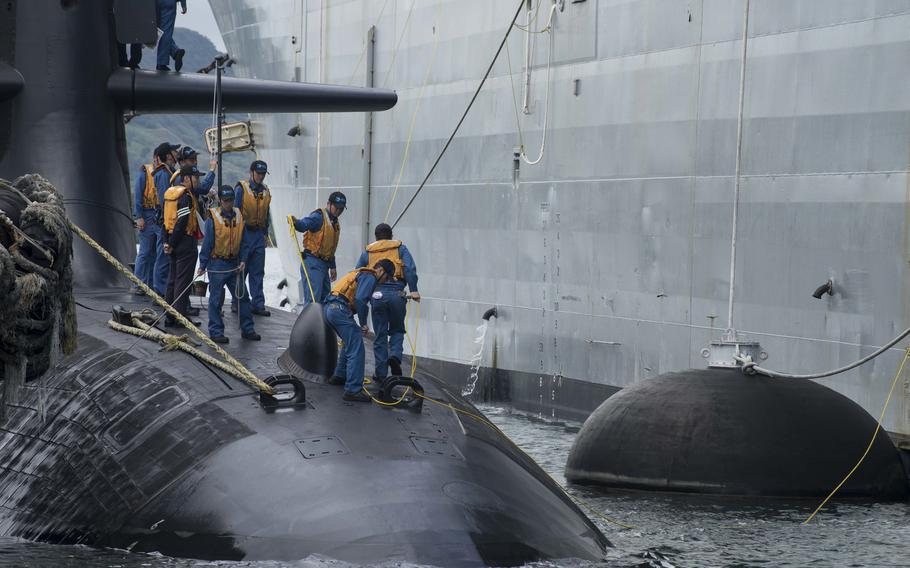
Sailors assigned to the Japan Maritime Self-Defense Force submarine JS Soryu (SS-501) moor port-side along the U.S. Navy submarine tender USS Frank Cable (AS 40) on June 10, 2018, in Polaris Point, Guam. (Alana La/U.S. Navy)
TOKYO — The Defense Ministry is considering equipping the Maritime Self-Defense Force's submarines with active sonar that sends out sound waves to detect the location of other vessels, The Yomiuri Shimbun has learned.
MSDF submarines have so far avoided using active sonar because it risks revealing their location to an enemy.
Following an incident in February in which the MSDF submarine Soryu collided with a cargo ship off Kochi Prefecture, however, the ministry decided that active sonar was necessary to prevent a recurrence.
Operating under the sea, submarine crews are limited in what they can see. Submarines therefore search for obstacles and enemy vessels by using sonar to analyze sound waves under the sea.
Sonar is roughly divided into active and passive. Active sonar puts out sound waves and analyzes the waves that bounce back from targets, while passive sonar picks up sound waves that are generated by targets.
Submarines must maintain stealth, therefore they keep to a minimum equipment and devices that produce sounds. All active-duty submarines of the MSDF are equipped with passive sonar.
There are drawbacks, however. Submarines use sonar to confirm the safety of their surroundings when surfacing, but passive sonar sometimes fails to detect risks, depending on sea currents and the submarine's position in relation to other vessels.
The accident involving the Soryu occurred just before it surfaced. Experts have said the submarine may have been unable to sufficiently confirm safety via passive sonar alone.
Active sonar can measure the distances to an object more accurately, based on how long it takes sound waves to bounce back.
A senior MSDF official said, "If priority is placed on safety, submarines should be able to use not only passive sonar but also active. When they surface in territorial waters and other sea areas, the possibility of being attacked is low even if they discharge sound waves."
MSDF submarines will likely not limit their use of active sonar to sea areas near MSDF bases, but use it in other necessary situations as well.